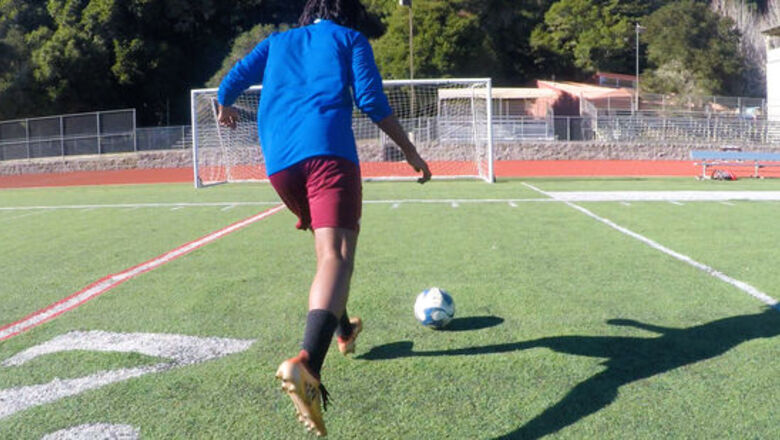
views
Executing the Kick

Approach the ball. Executing a chip usually occurs in situations where there isn't much room to navigate yourself or the ball in. For the sake of practice however, it's a good idea to get a bit of a running start. By running towards the ball, you'll be working on your timing. Run towards the ball as if you were about to kick it. It's a good idea to know which foot you're planning on chipping the ball with beforehand. Although you can chip a ball dead-ahead, it helps to approach the ball at a slight angle. This will give your ball backspin, which leads to better control.
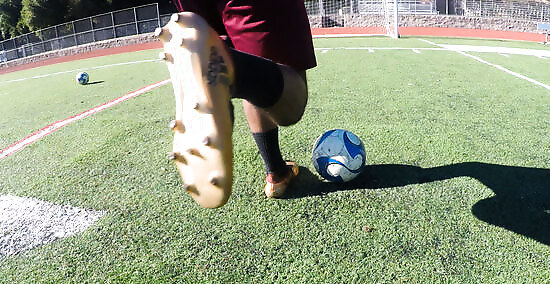
Plant your non-kicking foot to the side of the ball. Although a lot of attention is given to the kicking foot in soccer technique, the non-kicking foot is arguably just as important. As you're coming in with your kicking foot, keep your non-kicking foot planted firmly, approximately half a foot to the side and back of your ball. Depending on whether you're using your right or left foot to kick with, your non-kicking will go to the back-left or back-right of the ball. If facing forward is north, you can think of it as Southwest and Southeast.
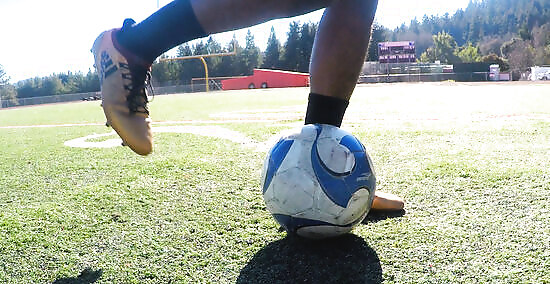
Angle your toe downward. Approach the ball, and keep your toes as down to the ground as possible. In order to properly scoop beneath the ball, you'll need your foot low. It may help to think of your kicking foot like a wedge you're trying to slide underneath the ball.
Scoop the ball. The trick to proper chipping lies in the way you come from under the ball. Bring your foot in under the ball, either from the side or dead-ahead. You should aim to get the fronts of your laces under the ball. Planting your aim to the left or right of the ball will result in the ball flying in a different direction. Practicing scooping is made easier if the ball is rolling towards you. This allows you to focus on the placement and angle of your foot, rather than the motion itself. It's a good idea to practice with straightforward scoops if you're new to it. You can practice scooping by running up to the ball and planting your feet under it, without going through with the kicking motion. It's important you get this step figured out first before moving on. EXPERT TIP Bernat Franquesa Bernat Franquesa Licensed Soccer Coach & Head of Methodology at APFC Bernat Franquesa is the Co-Founder and Head of Methodology at APFC (Albert Puig Football Concepts), a youth development program for players and coaches with headquarters in San Diego, California. APFC provides soccer training for youth and educational content and consulting services for coaches, academies, and clubs. At APFC, Bernat is responsible for co-developing and applying technical guidelines for player development programs. He has been coaching soccer in Catalunya and the US since he was 15 years old. Bernat Franquesa Bernat Franquesa Licensed Soccer Coach & Head of Methodology at APFC Our Expert Agrees: When you're chipping a soccer ball, make sure to hit well underneath the ball. That will give your shot the elevation that you need.
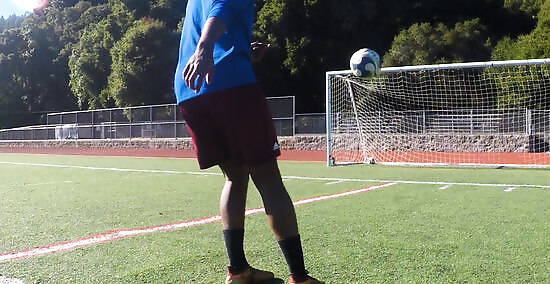
Launch the ball upward. When you have your foot wedged in beneath the soccer ball, launch the ball up with a swift upward motion. Bring your knee and shoe up and aim to launch it up and forward. If done with the proper scooping motion and force, this should result in a long arc. If you are looking to gauge the effectiveness of your chip launches, try to measure the distance in terms of yards. 15-20 yards is a good place to start, although some of the best soccer players manage to get over 60 with a chip. It's important not to confuse this with a forceful kick. Launching the ball upward should be done in a swift motion, but you should be using finesse rather than force to launch it up. Soccer balls aren't heavy, so it won't take a lot to get it in the air.

Lean your body back as you kick. As you scoop and finally launch the ball upward, shift some of your weight backward. This will improve the lift of the ball, resulting in a more powerful chip.

Trick your opponents. One variation on chipping is the false kick. If you're about to chip a ball, you should rush up to it as if you were about to kick it normally. Then, at the last second, revert to your chipping form and launch it upward. This is a perfect tactic if you're trying to get the ball into the net. If the opposing goalie falls for your ruse, he'll try to defend a different attack than the one you're sending at him.
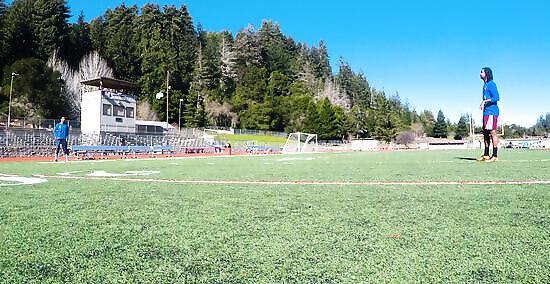
Practice passing to another player. Even if you're not playing competitively yet, it's helpful to have another person practicing with you while you're working on your soccer chips. After you have the basic chip figured out, having a real person to aim and pass your ball towards will help you deduce the amount of force and propulsion needed to launch the ball a given distance. When you're playing competitively, you'll need the calculations between force and distance to come naturally, so lots of practice is recommended before you take to the field against another team. If you don't have another person to practice with, you should try practicing chipping the ball at different distances. For example, you might begin by trying to chip the ball at a distance of 20 yards. If you manage to achieve that distance regularly, increase the distance by 10 yards. Push yourself as far as you think you'll be able to go. From there, you should mix up the distances and train your calculations.
Maintaining Proper Form
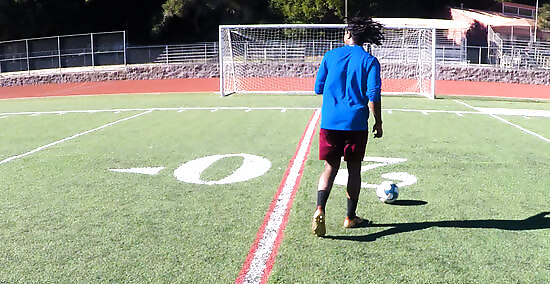
Decide whether chipping is appropriate. Chipping is seen as an advanced kicking technique compared to other passes. The amount of control and backspin needed to succeed doesn't make it preferable if you have a chance to pass normally. Rather, chipping the ball should be used in situations where you're surrounded by other players, or need to get the ball directly past the opposition. If the ball's launched in a high enough arc, it will be impossible for others to get it until it comes back down. It's important to remember that this goes both ways. If you chip a ball, your teammates won't be able to get the ball either until it lands. Because of this, it's a good idea to use it tactically.
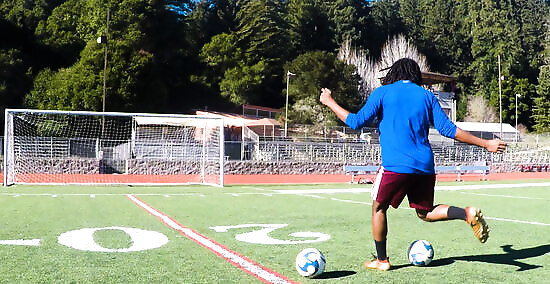
Keep an eye out for backspin. Backspin refers to the spinning motion of the ball itself while it's in the air. For the sake of chipping, backspin is a sign that you've executed the technique successfully. Backspin allows you and your teammates to control the ball more easily. It also results in a more potent arc. You can improve your backspin by emphasizing wedging your feet directly beneath the ball, as well as approaching the ball at a slight angle.

Wear proper soccer shoes. Executing a proper chip in soccer requires having a sleek enough shoe to get under the ball with. Most regular street shoes are too bulky to chip effectively with. Even if you're only playing for fun, it's recommended you pick up a pair of soccer-specific shoes. Your performance on the field can improve purely on the basis of what you're wearing.
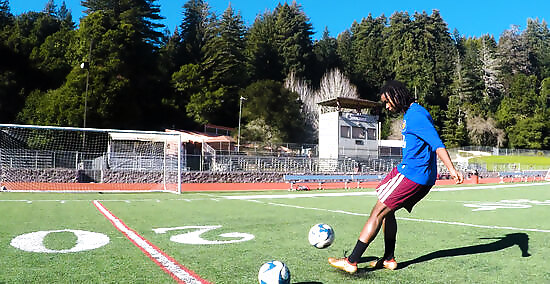
Practice using both feet. In sports, it's important to be as versatile as you can. Particularly in a competitive setting, there are going to be plenty of circumstances where it's not opportune to use your preferred kicking foot. Although most players have a foot they prefer, the most sensible athletes make sure to balance their training across both sides of the body.




















Comments
0 comment